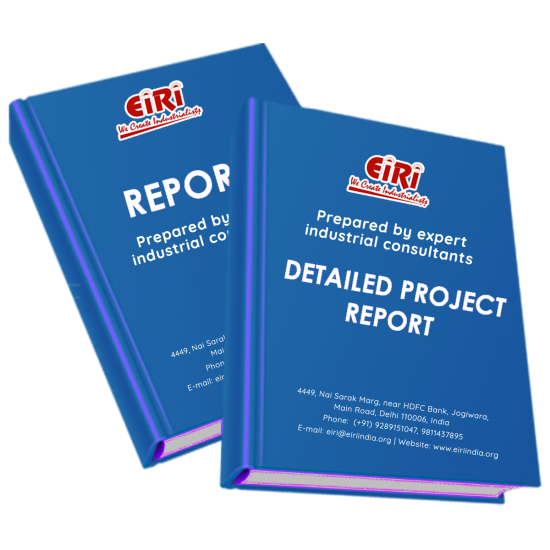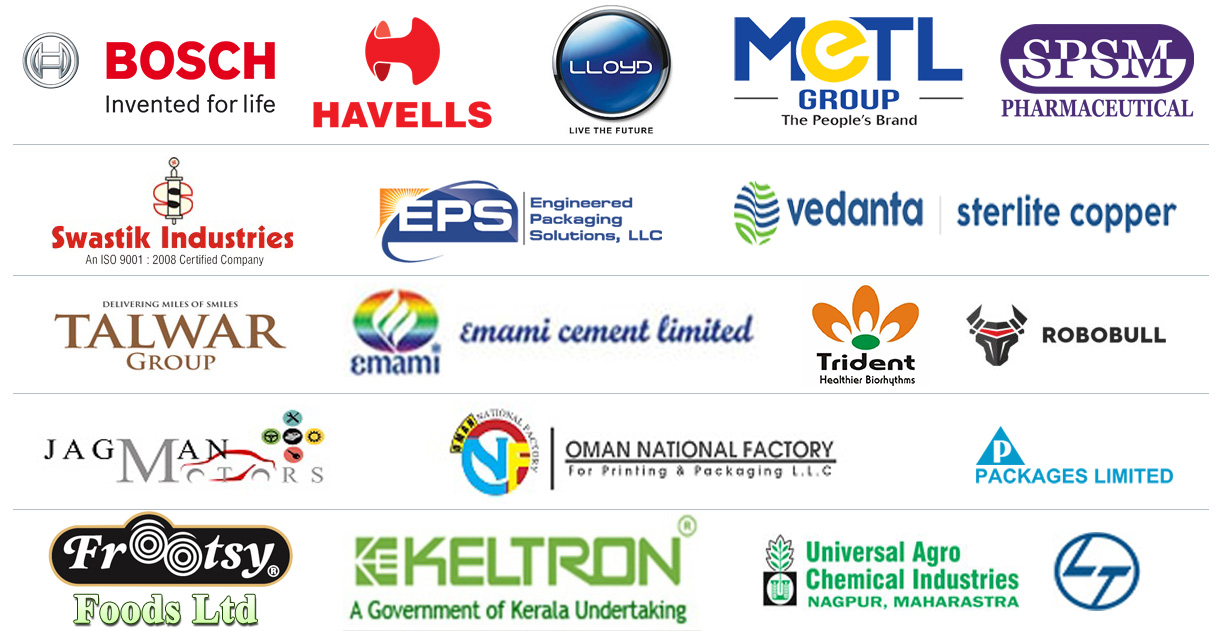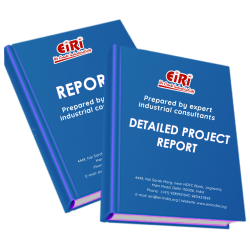Detailed Project Report on Pressure Die Casting

- More than 45 years of experience
- Managed by expert industrial consultants
- ISO 9001-2015 Certified
- Registered under MSME, UAM No: DL01E0012000
- 24/5 Research Support
Get your quesries resolved from an industry expert. Ask your queries before report or book purchase. - Custom Research Service
Speak to the our consultant to design an exclusive study to serve your research needs. - Quality Assurance
All reports are prepared by highly qualified consultants & verified by a panel of experts. - Information Security
Your personal & confidential information is safe & secure.
PRESSURE DIE CASTING
[EIRI/EDPR/1588] J.C. 386US$
INTRODUCTION
Die casting is a popular manufacturing process for casting metal products. There are two main die casting process types and several variations in process design. When molten metal is forced into mold cavities at high pressure, it is known as die casting. The process is best suited for speedy production of bulk metallic parts that require minimal post-production machining.
Types of Die Casting Processes
All die casting process types are designed with the same goal in mind—cast a mold using injected molten metal. Depending on the type of melted metal, part geometry and part size, different die casting processes can deliver superior results over alternative methods. The two main types of die casting processes are hot-chamber and cold-chamber die casting. Variations on these two types of die casting include:
• Low-pressure die casting
• Vacuum die casting
• Squeeze die casting
• Semi-solid die casting
The Hot-Chamber Die Casting Process
Hot-chamber die casting, sometimes called gooseneck casting, is the more popular of the two die casting processes. In this process, the cylinder chamber of the injection mechanism is completely immersed in the molten metal bath. A gooseneck metal feed system draws the molten metal into the die cavity.
While direct immersion in the molten bath allows for quick and convenient mold injection, it also results in increased corrosion susceptibility. Due to this fact, the hot-chamber die casting process is best suited for applications that utilize metals with low melting points and high fluidity. Good metals for the hot-chamber die casting process include lead, magnesium, zinc and copper.
The Cold-Chamber Die Casting Process
The cold-chamber die casting process is very similar to hot-chamber die casting. With a design that focuses on minimizing machine corrosion rather than production efficiency, the melted metal is automatically- or hand-ladled into the injection system. This eliminates the necessity for the injection mechanism to be immersed in the molten metal bath.
For applications that are too corrosive for the immersion design of hot-chamber die casting, the cold-chamber process can be an excellent alternative. These applications include the casting of metals with high melting temperatures, such as aluminum and aluminum alloys.
The Low-Pressure Die Casting Process
Low-pressure die casting is a process best suited for aluminum components that are symmetric around an axis of rotation. Vehicle wheels, for example, are often fabricated through low-pressure die casting. In this type of process, the mold is situated vertically above the molten metal bath and connected via a riser tube. When the chamber is pressurized (usually between 20 and 100kPa), the metal is pulled upward and into the mold. The elimination of feeders from this type of die casting process delivers the high casting yields.
The Vacuum Die Casting Process
Vacuum pressure casting (VPC) is a relatively new die casting process that delivers enhanced strength and minimal porosity. This process is similar to low-pressure die casting, except the locations of the die cast mold and molten metal bath are reversed. The cylinder chamber can become a vacuum, which forces the molten metal into the mold cavity. This design reduces turbulence and limits the amount of gas inclusions. Vacuum die casting is especially beneficial in applications destined for post-casting heat treatment.
The Squeeze Die Casting Process
Squeeze casting was created as a workable solution for casting metals and alloys with low fluidity. In this process, the molten metal fills up an open die, which then squeezes closed, forcing the metal into the recessed portions of the molding. The squeeze casting process delivers extremely dense products and is a complementary process to subsequent heat-treating. The process is most often associated with molten aluminum, and is used in applications that call for fiber reinforcement.
COST ESTIMATION
Plant Capacity 2 MT/Day
Land & Building (4000 sq.mt.) US$ 6.06 Lac
Plant & Machinery US$ 1.83 Lac
Working Capital for 2 Months US$ 3.29 Lac
Total Capital Investment US$ 11.63 Lac
Rate of Return 26%
Break Even Point 60%
CONTENTS
INTRODUCTION
USES AND APPLICATION
PROPERTIES
B.I.S SPECIFICATION
MARKET SURVEY
EMPLOYMENT OPPORTUNITIES FOR CITIZENS IN THE ALUMINUM INDUSTRY
OVERVIEW OF ALUMINIUM IN MIDDLE EAST
PRODUCTION OF PRESSURE DIE CASTING IN MIDDLE EAST
IMPORT AND EXPORT OF PRESSURE DIE CASTING IN MIDDLE EAST
DEMAND AND SUPPLY POSITION OF ALUMINIUM DIE CASTING (PRESSURE DIE CASTING) IN MIDDLE EAST
EXPORT & IMPORT OF ALUMINIUM AND ALLOY INCLUDING SCRAP FROM UAE
CHINA S DIE CASTING INDUSTRY TO UPGRADE GROWTH REVIEW
COMBINATION OF MOLD AND DIE CASTING MACHINE FOR CASTING ENTERPRISES IN CHINA TO OPEN NEW IDEAS
ALUMINIUM PRODUCING COUNTRIES
TREND OF ALUMINIUM INDUSTRY IN MIDDLE EAST
THE CASTING MARKET IN ITALY
SHIPMENT DETAILS
LIST OF BUYERS
LIST OF AIRCRAFT AND ENGINE MRO COMPANIES IN THE UAE
MANUFACTURING PROCESS
QUALITY CONTROL
PROCESS FLOW CHART
PLANT LAYOUT
SUPPLIER PLANT AND MACHINERIES
SUPPLIERS OF RAW MATERIALS
SUPPLIERS OF ALUMINUM PRESSURE DIE CASTING COMPONENTS
SUPPLIERS OF ALUMINIUM INGOT
SUPPLIERS OF PICKLING ACIDS
SUPPLIERS OF DIE-CASTING MACHINES
SUPPLIERS OF DRILLING AND LATHE MACHINE
SUPPLIERS OF MACINE SHOP
APPENDIX – A:
01. PLANT ECONOMICS
02. LAND & BUILDING
03. PLANT AND MACHINERY
04. OTHER FIXED ASSESTS
05. FIXED CAPITAL
06. RAW MATERIAL
07. SALARY AND WAGES
08. UTILITIES AND OVERHEADS
09. TOTAL WORKING CAPITAL
10. TOTAL CAPITAL INVESTMENT
11. COST OF PRODUCTION
12. TURN OVER/ANNUM
13. BREAK EVEN POINT
14. RESOURCES FOR FINANCE
15. INSTALMENT PAYABLE IN 5 YEARS
16. DEPRECIATION CHART FOR 5 YEARS
17. PROFIT ANALYSIS FOR 5 YEARS
18. PROJECTED BALANCE SHEET FOR (5 YEARS)
How to Make Project Report?
Detailed Project Report (DPR) includes Present Market Position and Expected Future Demand, Technology, Manufacturing Process, Investment Opportunity, Plant Economics and Project Financials. comprehensive analysis from industry covering detailed reporting and evaluates the position of the industry by providing insights to the SWOT analysis of the industry.
Each report include Plant Capacity, requirement of Land & Building, Plant & Machinery, Flow Sheet Diagram, Raw Materials detail with suppliers list, Total Capital Investment along with detailed calculation on Rate of Return, Break-Even Analysis and Profitability Analysis. The report also provides a birds eye view of the global industry with details on projected market size and then progresses to evaluate the industry in detail.
We can prepare detailed project report on any industry as per your requirement.
We can also modify the project capacity and project cost as per your requirement. If you are planning to start a business, contact us today.
Detailed Project Report (DPR) gives you access to decisive data such as:
- Market growth drivers
- Factors limiting market growth
- Current market trends
- Market structure
- Key highlights
Overview of key market forces propelling and restraining market growth:
- Up-to-date analyses of market trends and technological improvements
- Pin-point analyses of market competition dynamics to offer you a competitive edge major competitors
- An array of graphics, BEP analysis of major industry segments
- Detailed analyses of industry trends
- A well-defined technological growth with an impact-analysis
- A clear understanding of the competitive landscape and key product segments
Need Customized Project Report?
- Ask for FREE project related details with our consultant/industry expert.
- Share your specific research requirements for customized project report.
- Request for due diligence and consumer centric studies.
- Still haven't found what you're looking for? Speak to our Custom Research Team
About Engineers India Research Institute:
Note: We can also prepare project report on any subject based on your requirement and country. If you need, we can modify the project capacity and project cost based on your requirement.
Our Clients

Our Approach
- Our research reports comprehensively cover Indian markets (can be modified as per your country), present investigation, standpoint and gauge for a time of five years*.
- The market conjectures are produced on the premise of optional research and are cross-accepted through associations with the business players
- We use dependable wellsprings of data and databases. What's more, data from such sources is handled by us and incorporated into the report
Why buy EIRI reports?
- Our project reports include detailed analysis that help to get industry Present Market Position and Expected Future Demand.
- Offer real analysis driving variables for the business and most recent business sector patterns in the business
- This report comprehends the present status of the business by clarifying a complete SWOT examination and investigation of the interest supply circumstance
- Report gives investigation and top to bottom money related correlation of real players/competitors
- The report gives gauges of key parameters which foresees the business execution
























